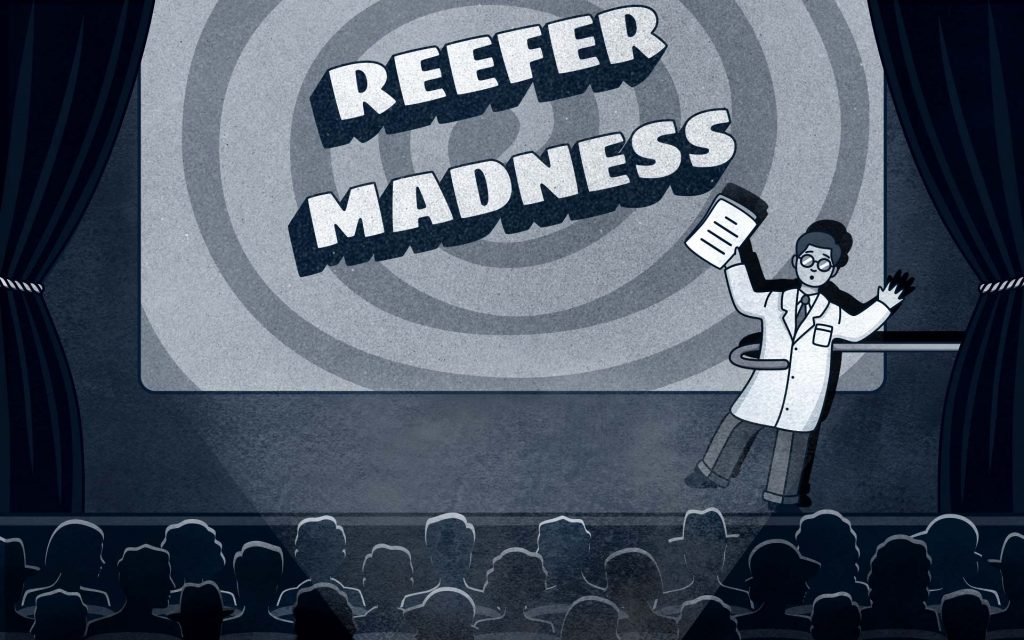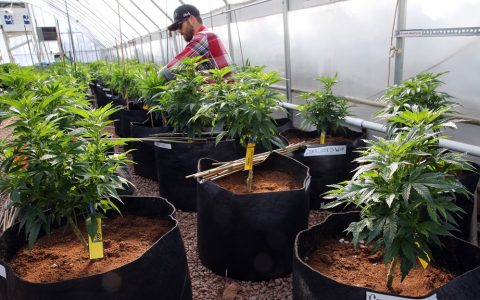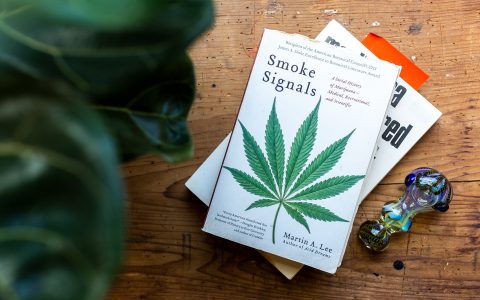The following compendium of landmark cannabis studies is exclusively focused on top-level research that either fundamentally advanced our understanding of the plant’s therapeutic properties, or thoroughly debunked some pernicious piece of official misinformation—such as “smoking weed gives you lung cancer.”
But that’s only half the story when it comes to the intersection of science and cannabis. So before we get to the good stuff, let’s start with an unfortunately typical example of the kind of spurious evidence that has been consistently used over the last hundred years to support the government’s all-out war on cannabis.
Our story begins in 1974, when Dr. Robert Galbraith Heath published research conducted at Tulane University, where he chaired the Department of Psychiatry and Neurology. Today, the late Dr. Heath is a controversial figure in the world of neuroscience, largely due to his pioneering efforts to study deep brain stimulation (a.k.a. electro-shock) as a “conversion therapy” for homosexuals, and his willing participation in illegal, CIA-led human experiments of a “brainwashing” drug called bulbocapnine. But at the time, his credentials remained impeccable.
And so, when Heath produced findings supposedly showing that “the active ingredient in marijuana [THC] impairs the brain’s circuitry,” the press dutifully ran headlines claiming “Pot Causes Brain Damage” without a trace of skepticism. While anti-cannabis politicians like then California Governor Ronald Reagan immediately seized on the study as evidence that cannabis was far too dangerous to even consider legalizing.
Like many federally funded studies of the era, Heath’s research was deeply flawed. In Smoke Signals: A Social History of Marijuana, author Martin Lee calls out his exceedingly small study of rhesus monkeys as “a textbook case of scientific fraud.”
“Shackled in air tight gas masks, Heath’s monkeys were [regularly] forced to inhale the equivalent of 63 high-potency marijuana cigarettes in five minutes. Lo and behold, the primates suffered brain damage from suffocation and carbon monoxide poisoning, but Heath attributed the results to marijuana toxicity”
Heath’s findings were never replicated, and several prominent follow up studies—including one at the National Center for Toxicology Research—directly repudiated his conclusions.
Then in 2003, the US Department of Health and Human Services was granted a patent on “cannabinoids as neuroprotectants,” based on evidence that compounds found in the cannabis plant not only don’t cause brain damage, they’re actually effective in “limiting neurological damage following…stroke and trauma, or in the treatment of neurodegenerative diseases, such as Alzheimer’s disease, Parkinson’s disease and HIV dementia.”
To this day, cannabis remains a Schedule 1 narcotic—a categorization that flies in the face of not just the latest cutting-edge research into the plant’s incredible medicinal potential, but also some of the oldest medical texts in existence. For example, The Divine Farmer’s Herb Root Classic (2727 BC)—widely considered the world’s oldest pharmacopeia—lists cannabis among the “supreme elixirs of immortality,” and recommends it as a superior treatment for “constipation, ‘female weakness,’ gout, malaria, and rheumatism.”
And as our list of landmark cannabis studies makes clear, that’s just for starters.
Indian Hemp Drugs Commission (1894)
In 1893, India was under British rule, and the colonial government became concerned about the amount of cannabis (i.e., “hemp drugs”) being consumed by the locals. So teams of British and Indian medical professionals were dispatched throughout the country to collect information on not just the health effects of cannabis, but also the social and moral impact.
The result was a massive research paper (over 3,000 pages), with recorded testimony from almost 1,200 “doctors, coolies, yogis, fakirs, heads of lunatic asylums, bhang peasants, tax gatherers, smugglers, army officers, hemp dealers, ganja palace operators, and the clergy.” Nearly all of the data in the seven volume report bolstered two key conclusions: moderate cannabis consumption is either relatively harmless or beneficial, and cannabis prohibition would be supremely unjust.
“To forbid or even seriously to restrict the use of so gracious an herb as hemp would cause widespread suffering and annoyance,” the report concluded. For the next 50 years, this research would stand as the most thorough and scientifically rigorous available.
The Laguardia Report (1944)
 (Gillian Levine for Leafly)
(Gillian Levine for Leafly)
In direct response to the Reefer Madness-era misinformation campaigns of Harry J. Anslinger (head of the Federal Bureau of Narcotics), New York City mayor Fiorello La Guardia commissioned a blue ribbon panel of leading doctors, psychiatrists, psychologists, pharmacologists, chemists and sociologists, and tasked them with making a thorough investigation of cannabis based on a comprehensive review of all available scientific literature, plus primary research.
Released as The La Guardia Report, the landmark study earned the endorsement of the prestigious New York Academy of Medicine, while unambiguously declaring that the prohibition of cannabis fails the smell test.
“Marijuana, like alcohol, does not alter the basic personality,” the report’s authors concluded. “Marijuana does not of itself give rise to antisocial behavior. There is no evidence to suggest that the continued use of marihuana is a steppingstone to the use of opiates. Prolonged use of the drug does not lead to physical, mental, or moral degeneration, nor have we observed any permanent deleterious effects from its continued use. Quite the contrary, marihuana and its derivatives and allied synthetics have potentially valuable therapeutic applications which merit future investigation.”
The Discovery of THC (1964)
When a team of Israeli researchers led by Dr. Raphael Mechoulam first discovered THC in 1964 and identified it as the primary psychoactive compound found in the cannabis plant, that was not just a breakthrough in our collective understanding of cannabis—it also led to a series of breakthroughs in our understanding of how the human body functions.
By the late 1980s, this would include the discovery of an entirely new system in the body—the endocannabinoid system—which can be thought of as your “root-level operating system,” a kind of central processing unit that regulates and alters the functioning of many other important systems and keeps them in balance.
Leafly’s comprehensive explainer on the endocannabinoid system breaks down exactly how it works, and why its discovery was groundbreaking not just for medicinal cannabis, but for medicine in general.
The Shafer Commission Report (1972)
After studying cannabis for more than two years, a team of experts hand-picked by President Richard M. Nixon returned with a set of recommendations that started with immediately removing all criminal penalties for cannabis, including “casual distributions of small amounts,” since “neither the marijuana user nor the drug itself can be said to constitute a danger to public safety.”
“Criminal law is too harsh a tool to apply to personal possession even in the effort to discourage use…It implies an overwhelming indictment of the behavior which we believe is not appropriate. The actual and potential harm of use of the drug is not great enough to justify intrusion by the criminal law into private behavior, a step which our society takes only with the greatest reluctance.”
Known collectively as the Shafer Commission, the eminent researchers that compiled the report knew all-too-well that their findings flew in the face of the government’s official position on legalization, but hoped nonetheless their comprehensive research would spark a fact-based debate of the evidence that would in turn lead to significant reform.
Instead, Nixon attacked the commission and ignored its recommendations, before pushing the whole thing down the memory hole. The very next year, he created the Drug Enforcement Administration (DEA) and charged them with waging “all out war” on cannabis.




